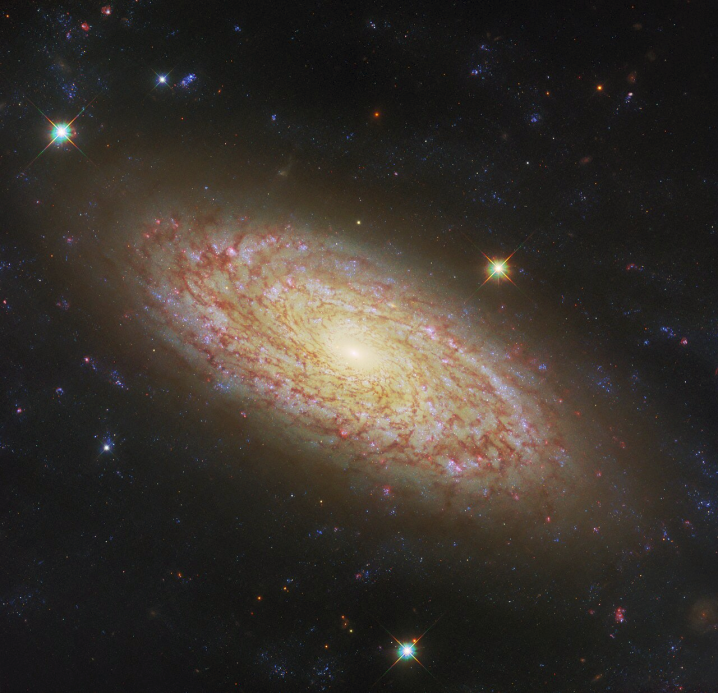With all the excitement over the last few years for the shiny and new James Webb Space Telescope, it’s easy to forget about the grand old master of the space telescopes, Hubble. But although Webb is a successor to Hubble in some ways, with newer technology and the ability to see the universe in even greater detail, it isn’t a replacement. A pair of new images shows why: with the same galaxy captured by both Webb and Hubble, you can see the different details picked out by each telescope and why having both of them together is such a great boon for scientists.
The galaxy NGC 2090 was imaged by Webb, shown above, using its MIRI and NIRCam instruments. These instruments operate in the mid-infrared and near-infrared portions of the electromagnetic spectrum respectively, which is why the arms of this galaxy appear to be glowing red. These arms are made of swirling gas and dust, and within them are compounds called polycyclic aromatic hydrocarbons that glow brightly in the infrared. The blue color in the center of the galaxy shows a region of young stars burning hot and bright.

This image, taken by Hubble, shows the view of the same galaxy as seen in the optical or visible light portion of the spectrum, which is the same as what our eyes can see. In this version, the spiral arms are less visible, but you can more clearly see the patchy areas of dust that make up the disc of the galaxy.
This galaxy is a busy one, with star formations still occurring and stars of many different ages found throughout the center and disc. This diversity of stars is useful for scientists, who can use galaxies like this one to observe the evolution of stars by seeing them at different ages. This galaxy was chosen for Webb to study as part of a project about stellar evolution that looks at nearby galaxies still in the process of forming stars.
The image from Hubble was taken as part of research into star formation as well, and was also used by a project called the Extragalactic Distance Scale Key Project to study a type of star called Cepheid variable stars, which are important in understanding the expansion rate of the universe.




